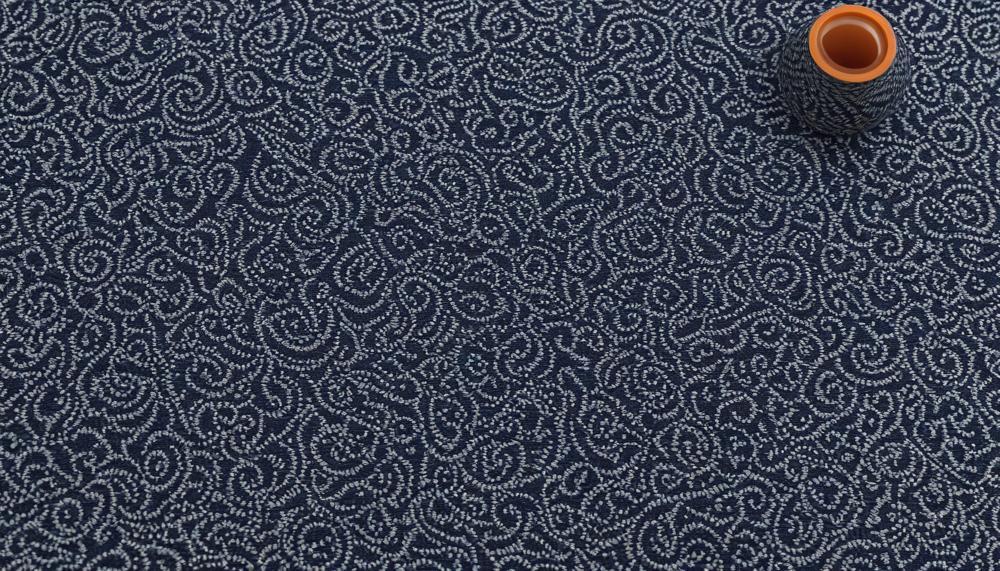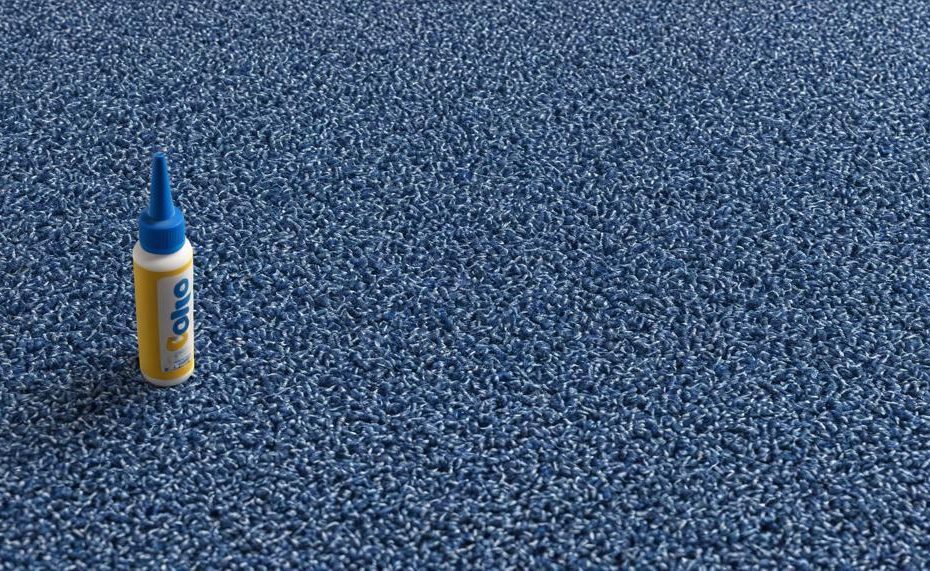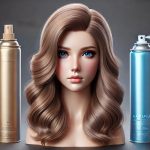When it comes to choosing the best glue for fabric, the answer is simple: fabric glue. This specialized adhesive is designed specifically for use on cloth, providing a strong, flexible, and often washable bond that’s ideal for a wide range of projects.
Key Takeaways:
- Best Choice: Fabric glue is the top pick for adhering cloth.
- Application: Apply carefully for a permanent bond.
- Benefits: Dries clear, washable, and flexible.
- Alternatives: Hot glue works well, but avoid craft glue, glue sticks, and super glue.
Choosing the right glue for your fabric projects is crucial for ensuring lasting results. Whether you’re repairing a tear, attaching patches, or creating something entirely new, fabric glue offers the durability and flexibility needed to keep your creations intact. It’s a must-have in any crafter’s toolkit, providing peace of mind that your work will stand the test of time.
So, next time you’re in a craft store or browsing online, make sure to pick up some fabric glue to keep your fabric projects looking their best.
Table of Contents
Best Fabric Glues
Each of these glues excels in different aspects, making them highly favored for various fabric-related projects.
| Glue | Key Features | Why Recommended |
| Aleene’s Original Tacky Glue | High adhesive strength, dries clear, flexible bond, washable | This glue offers superior adhesive strength suitable for heavy fabrics. It dries clear and remains flexible, ensuring the bond holds up through wear and washes. It’s versatile, making it perfect for a range of fabric projects. |
| Dritz Unique Stitch | Water-based, non-toxic, strong bond, dries clear | Dritz Unique Stitch provides a durable and flexible bond that’s ideal for fabrics. Being water-based and non-toxic, it’s safe to use, and it dries clear, making it excellent for visible seams and hems. It’s especially popular for fabric repairs. |
| Beacon Fabri-Tac | Quick-drying, acid-free, strong bond, resistant to washing and heat | Beacon Fabri-Tac is renowned for its quick-drying formula and robust bond. It’s acid-free and resistant to washing and heat, making it ideal for heavy-duty fabric projects and upholstery. Its strong, flexible bond ensures long-lasting adhesion. |
These fabric glues are celebrated for their strong adhesion, durability, and ability to withstand frequent washing and use. For instance, Aleene’s Original Tacky Glue is highly versatile and works well with various fabrics, while Dritz Unique Stitch is perfect for detailed repairs and hems due to its clear, flexible finish. Beacon Fabri-Tac is the go-to for more demanding projects needing a quick and strong bond.
When choosing fabric glue, consider the specific needs of your project, such as the type of fabric, required drying time, and the expected durability of the bond.
Best Fabric Glues Comparison Table
| Glue Name | Strengths | Weaknesses |
| Tear Mender TG-6H | Best for quick repairs | May not be as versatile for other fabric projects |
| Aleene’s Fabric Fusion 23473 | Best for versatility | Can be messy and difficult to clean up |
| Beacon Fabri-Tac 1123-34 | Best for strong bonds | May have a strong odor |
| Aleene’s 17374 | Best for DIY projects | Can be stiff when dry |
| ODIF USA 505CAN124Z | Best temporary adhesive | Not suitable for permanent bonds |
| E6000 Fabri-Fuse 5650047 | Durable and waterproof bond | Takes longer to dry compared to other glues |
| Permatex 25247-6PK8 | Heat-resistant and machine washable bond | Not suitable for delicate fabrics |
| Aleene’s 15271 | Quick-drying and flexible bond | May not hold up well with repeated washing |
| Dritz 40110 | Suitable for various fabrics and embellishments | Can be difficult to remove from fabric if mistakes are made |
When selecting a fabric glue, consider your project’s specific needs. Tear Mender TG-6H excels for quick repairs but might lack versatility.
For versatility, Aleene’s Fabric Fusion 23473 is a strong contender, though it can be messy. Beacon Fabri-Tac 1123-34 offers robust bonds but emits a strong odor.
Aleene’s 17374 suits DIY enthusiasts but dries stiff. For temporary fixes, ODIF USA 505CAN124Z is great but not for permanent bonds.
E6000 Fabri-Fuse 5650047 ensures durability and water resistance but dries slowly. Permatex 25247-6PK8 is perfect for heat-resistant, washable bonds but not delicate fabrics.
Aleene’s 15271 is quick-drying but may not endure repeated washes.
Lastly, Dritz 40110 handles various fabrics well but can be tough to correct if errors occur.
Buying Guide for the Best Fabric Glue
Choosing the best fabric glue for your project involves evaluating several key factors to ensure optimal results. Here’s a detailed guide to help you make an informed decision:
Adhesive Strength
- Description: Different fabric glues offer varying levels of adhesive strength. Some are designed for lightweight fabrics, while others are meant for heavier materials like denim or canvas.
- Consideration: Match the adhesive strength to the fabric type and the project’s demands.
Drying Time
- Description: Fabric glues have different drying times, ranging from a few minutes to several hours.
- Consideration: Choose a quick-drying glue for urgent repairs or projects, but ensure it allows enough time for adjustments.

Durability
- Description: The glue should withstand regular wear and tear, washing, and ironing without losing its bond.
- Consideration: Opt for a durable glue if the fabric will be subjected to frequent use or washing.
Resistance to Washing, Heat, and Wear
- Description: Some fabric glues are specifically formulated to resist water, heat, and wear.
- Consideration: Essential for garments or items that will be washed regularly or exposed to heat, such as in the case of upholstery.
Specific Application Techniques
- Description: Proper application is crucial for a strong bond. Techniques include cleaning the fabric, applying the glue sparingly, and using precise tools.
- Consideration: Follow manufacturer instructions and test on a small fabric piece to ensure compatibility.
Alignment with Project Requirements
- Description: Different projects may require specific types of glue, such as flexible glue for garments or heavy-duty glue for upholstery.
- Consideration: Choose glue designed for the specific nature of your project for the best results.
Brand Reputation
- Description: Trusted brands like Aleene’s are known for their quality and reliability.
- Consideration: Opt for well-reviewed and reputable brands to avoid subpar performance.
Versatility
- Description: Some fabric glues can bond non-fabric materials like metal or plastic.
- Consideration: Select a versatile glue if your project involves multiple materials.
Outdoor Suitability
- Description: For outdoor fabrics, the glue should withstand environmental factors like moisture and UV exposure.
- Consideration: Ensure the glue is rated for outdoor use if applicable.
10. Delicate Fabrics
- Description: Glues for delicate fabrics should not be too harsh or cause discoloration.
- Consideration: Use gentle, fabric-specific glue for materials like silk or lace.
| Factor | Description | Consideration |
| Adhesive Strength | Varies for different fabrics and project needs. | Match strength to fabric type and project. |
| Drying Time | Ranges from minutes to hours. | Quick-drying for urgent tasks, adjustable for precise work. |
| Durability | Should withstand wear, washing, and ironing. | Choose durable glue for high-use items. |
| Resistance | Water, heat, and wear resistance varies. | Essential for washable and heat-exposed fabrics. |
| Application Techniques | Proper cleaning and precise application are key. | Follow instructions and test on small areas. |
| Project Requirements | Specific glues for garments, upholstery, etc. | Use project-specific glue for best results. |
| Brand Reputation | Trusted brands ensure quality. | Opt for reputable brands like Aleene’s. |
| Versatility | Can bond non-fabric materials. | Choose versatile glue for mixed materials projects. |
| Outdoor Suitability | Should resist moisture and UV exposure. | Ensure outdoor rating if needed. |
| Delicate Fabrics | Should be gentle and non-discoloring. | Use fabric-specific glue for delicate materials. |
Can fabric glues be used as a substitute for sewing?
The short answer is no, fabric glues cannot effectively replace sewing techniques for creating durable and long-lasting fabric projects. Sewing remains the gold standard for most fabric projects due to its superior strength, flexibility, and longevity.
Here’s a detailed explanation of why sewing is indispensable and where fabric glue finds its best uses:
Sewing vs. Fabric Glue
| Aspect | Sewing | Fabric Glue |
| Durability | Sewing provides a strong, permanent bond that withstands wear and tear over time. | Fabric glue offers a temporary hold that is less durable, especially under stress. |
| Flexibility | Sewn seams can flex and stretch with the fabric, maintaining their integrity. | Glue may become brittle and crack over time, particularly after multiple washes. |
| Longevity | Sewing ensures longevity, with seams that can last for years with proper care. | Glue bonds tend to degrade faster, reducing the lifespan of the project. |
| Appearance | Neatly sewn seams look professional and clean. | Glue can seep through and cause stains or stiff areas on the fabric. |
| Application | Sewing is suitable for almost all fabric types and project complexities. | Fabric glue is best for quick fixes, basting, or small craft projects. |
When to Use Fabric Glue
While fabric glue cannot replace sewing for most projects, it does have its place. It is ideal for:
- Basting: Temporarily holding pieces together before sewing.
- Replacing Pins: Holding fabric in place without the risk of pinholes.
- Pockets and Small Crafts: Simplifying minor fixes and small, non-durable crafts.
Do fabric glues work on all types of fabrics?
No, fabric glues do not work equally well on all types of fabrics. Their effectiveness varies based on the fabric’s composition, weight, and the type of bond required. Here’s a detailed look at how fabric glues perform on different fabrics:
| Fabric Type | Effectiveness | Notes |
| Cotton | Moderate | Absorbs glue, making bonding tricky. Best with strong, fast-drying glues. |
| Wool | Moderate | Similar to cotton; absorption can weaken the bond. Suitable for thicker glues. |
| Polyester | High | Smooth surface allows easy adhesion. Use with a variety of glue types. |
| Nylon | High | Less absorbent, easy to bond with liquid or spray glues. |
| Silk | Low | Delicate fabric, easily damaged by strong glues. Use light, temporary adhesives. |
| Chiffon | Low | Very delicate, prone to damage. Use low-strength, temporary glues. |
| Denim | High | Heavy fabric, requires strong, permanent adhesives for a solid bond. |
| Canvas | High | Thick and heavy, needs robust, permanent glues for effective bonding. |
Fabric glues come in various forms—liquid, spray, and stick—each suited to different applications:
- Liquid glues provide precise application, suitable for most fabrics but can be messy.
- Spray glues cover large areas quickly but are tricky on delicate fabrics.
- Stick glues are convenient but might lack the strength needed for heavier fabrics.
The quality and brand of the glue also impact effectiveness. Reputable brands usually offer better performance across various fabrics, whereas cheaper glues may fail to create strong bonds or could damage the material.
Can fabric glues be used to hem garments?
The short answer is yes, fabric glues can provide a durable and effective hem for garments. However, their effectiveness can vary based on the type of fabric, the glue used, and the intended duration of the hem.
Fabric glues, such as those from trusted brands like Aleene’s or Dritz, offer a reliable bond for many types of fabrics. They are particularly useful for quick fixes, temporary alterations, or when sewing is not an option. These glues dry clear and maintain flexibility, ensuring the fabric does not become stiff or uncomfortable.
Advantages of Using Fabric Glue for Hems
- Ease of Use: Applying fabric glue is straightforward. Simply run a thin line along the edge of the fabric, press firmly, and let it dry.
- Seamless Finish: Fabric glue dries clear, providing a neat and invisible hem.
- Washable: Many fabric glues are designed to withstand washing, making them suitable for garments that will be laundered.
- Versatility: Fabric glue can be used on various fabrics, including cotton, polyester, and blends.
Disadvantages and Considerations
- Durability: While fabric glue provides a strong hold, it may not be as long-lasting as a sewn hem. Over time, washing and wearing can weaken the bond.
- Type of Fabric: Heavier fabrics may not bond as effectively with fabric glue. Testing on a small area first is advisable.
- Permanent vs. Temporary: For permanent hems, sewing is generally preferred. Fabric glue is excellent for temporary or less critical applications.
Comparison of Hemming Methods
| Method | Ease of Use | Durability | Finish | Washability |
| Fabric Glue | Very Easy | Moderate | Seamless | Good |
| Iron-on Hem Tape | Easy | High | Neat | Very Good |
| Sewing | Moderate | High | Professional | Excellent |
| Fusible Webbing | Moderate | High | Neat | Very Good |
Are fabric glues safe for children to use?
Yes, it is necessary to choose a specific type of fabric glue for children to use. Selecting the right fabric glue ensures safety and effectiveness in their craft and sewing projects.
To break it down, here’s why choosing the right type is crucial:
| Reason | Explanation | Examples |
| Safety | Fabric glues designed for children are typically non-toxic, ensuring they are safe if kids accidentally come into contact with the glue. | Aleene’s Original Tacky Glue |
| Effectiveness | These glues are formulated to bond fabric effectively, ensuring that the projects hold together well and withstand washing. | Dritz No-Sew Glue |
| Ease of Use | Child-friendly fabric glues are often easy to apply, with tips designed for small hands and a consistency that minimizes mess. | Elmer’s School Glue Gel |
Using household glues like white school glue or glue sticks is not recommended, as they may not adhere properly to fabric and can wash off easily. Investing in a glue made specifically for fabric not only provides better results but also ensures that the adhesive is safe and suitable for children’s use.
Always do a test patch to confirm the glue’s effectiveness and safety for the specific fabric and project.
Conclusion
For those diving into fabric projects, the best adhesive choice is clear: fabric glue. Engineered specifically for textiles, fabric glue offers a robust, flexible, and often washable bond that is indispensable for a variety of applications.
Top Choices for Fabric Glues:
- Aleene’s Original Tacky Glue: This glue stands out for its high adhesive strength, clarity upon drying, flexibility, and washability. Perfect for heavy fabrics, it ensures a lasting bond without compromising the fabric’s texture and appearance.
- Dritz Unique Stitch: This water-based, non-toxic glue is ideal for visible seams and hems. It dries clear and maintains a durable, flexible bond, making it a favorite for fabric repairs and intricate designs.
- Beacon Fabri-Tac: Known for its quick-drying formula, this glue offers a strong, heat-resistant bond. It’s perfect for heavy-duty projects and upholstery, providing long-lasting adhesion and maintaining fabric integrity through washes and wear.
For any crafter or DIY enthusiast, having fabric glue in your toolkit guarantees your projects are not only beautiful but also durable. From repairing garments to creating new designs, fabric glue provides the confidence that your work will endure.






